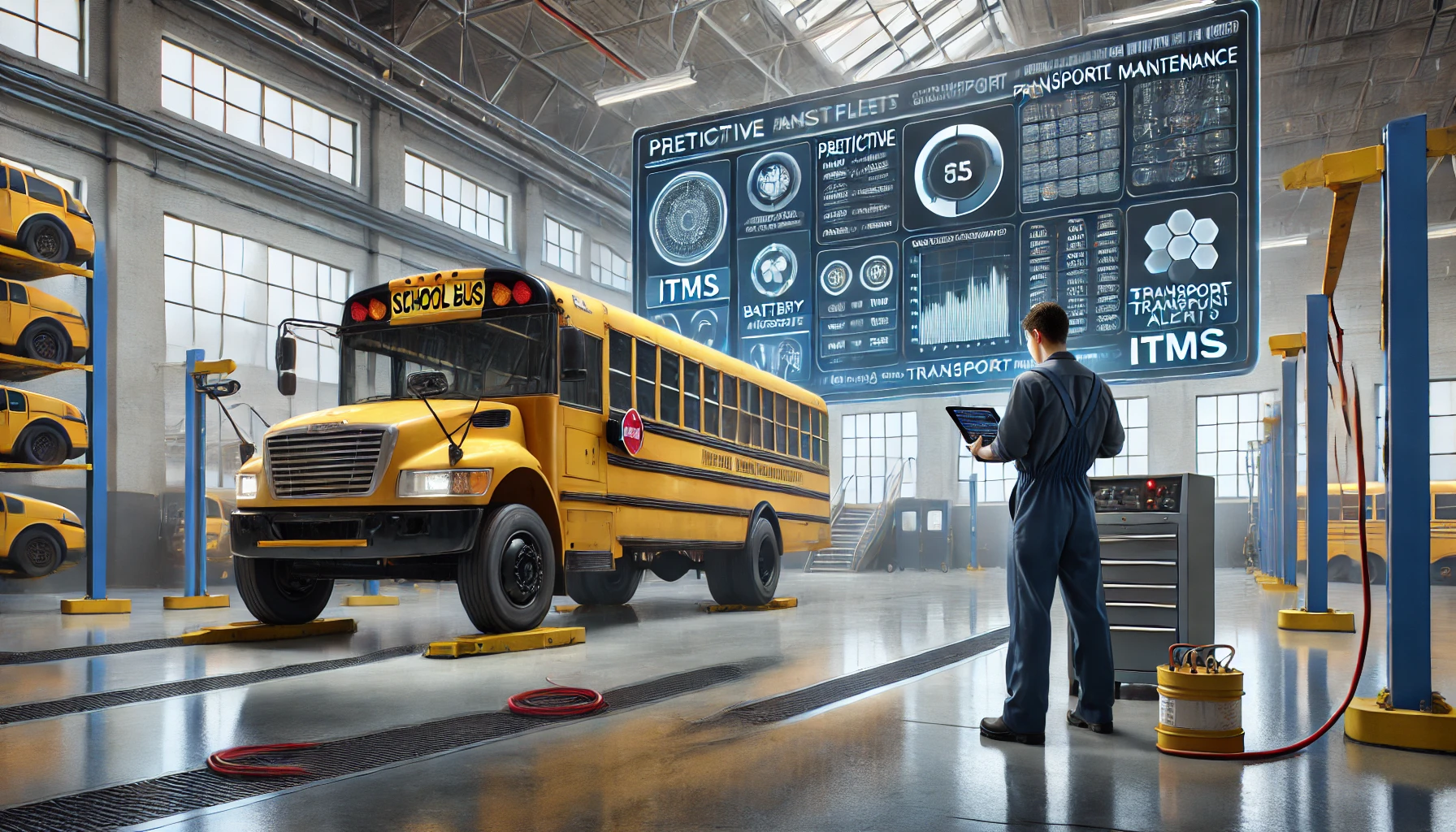Predictive Maintenance: How ITMS Reduces Bus Fleet Downtime and Prevents Breakdowns?

In the transport industry, especially for bus fleets and public transport, reducing downtime and avoiding unexpected breakdowns is essential to achieving smooth operations. Buses are the backbone of public transport, and bus breakdowns cause service disruptions, customer dissatisfaction, and higher repair costs. Buses are subject to daily wear and tear from the constant usage of long operating hours, and it is only logical that breakdowns happen unless there are preventive actions taken. This is where Predictive Maintenance based on Intelligent Transportation Management Systems (ITMS) comes into its own.
What is Predictive Maintenance?
Predictive Maintenance is a process in which data analysis is utilized to monitor the wellness of vehicles and predict when they will need maintenance. It aims to prevent breakdowns by addressing issues that could emerge before they occur, rather than adhering to set time schedules or only responding after a breakdown has happened.
In bus fleets, Predictive maintenance applies sensors, real-time data, and advanced algorithms to track the condition of buses, pinpoint probable issues, and alert fleet managers to maintenance that is needed. Predictive maintenance enables the operators, through predictive analytics, to pre-book maintenance prevent unplanned downtime, and get buses in service for more hours.
How ITMS Drives Bus Fleet Predictive Maintenance?
Intelligent Transportation Management Systems (ITMS) are revolutionizing bus fleet operations with real-time information, cloud computing, and machine learning to offer a more intelligent way of operating bus fleets. ITMS provides fleet managers with real-time information regarding the status and performance of every bus, enabling them to take pre-emptive action before an issue evolves.
This is how ITMS applies predictive maintenance to minimize downtime and prevent bus fleet failures:
1. Real-Time Data Collection
ITMS constantly gathers information from the buses, including engine performance, tire pressure, brake status, fuel efficiency, suspension status, battery charge, etc. Bus sensors transmit this information in real-time to a hub node where it is processed and analyzed. This provides the fleet manager with real-time visibility into the status of every bus in the fleet.
2. Machine Learning and Data Analytics
ITMS thereafter applies sophisticated machine learning procedures and statistical analysis to analyze the performance patterns of the buses. Analyzing historical as well as real-time data, ITMS detects discrepancies from normal operating conditions, indicating problems before they cause breakdowns.
For example, if a bus's brake pads are in excess wear or the fuel efficiency begins to decline irregularly, ITMS can indicate the same early on, and fleet managers can treat the issues ahead of time before they turn into a major problem.
3. Predictive Alerting and Maintenance Advice
The virtue of ITMS is the capability to identify when a bus would need maintenance. Using the history of previous performance and forecasting software, ITMS predicts the remaining useful life of major items such as the engine, the brakes, the tires, and the battery. When a part is likely to fail shortly, ITMS alerts the fleet manager as to which part needs to be addressed and what kind of maintenance is required.
For instance, if a bus battery is developing wear and nearing the end of its life cycle, ITMS will alert the fleet manager long before, and they can then replace the battery before it causes a breakdown while the bus is on the road, avoiding having the bus stuck and resulting in downtime.
4. Plan Optimum Maintenance
ITMS does away with the need for pre-scheduled time-based maintenance. Maintenance is done according to the real condition of the buses, as ascertained from the data collected and analyzed by ITMS. This means that fleet managers can only schedule maintenance when necessary, reducing wasteful servicing and preventing buses from being taken offline unnecessarily for maintenance.
This solution has two primary advantages: one, it saves money on unnecessary repairs, and two, it gets buses in for maintenance before they fail, reducing unplanned downtime and the expense of emergency repairs.
5. Smarter Decision Making and Resource Allocation
ITMS also gives fleet managers information that enables them to make better decisions about how they manage their bus fleets. By analyzing maintenance histories, the system can highlight which buses require more frequent repairs and which are more reliable. This allows managers to allocate resources more effectively, ensuring that high-priority vehicles are repaired first and that replacement decisions are made based on data-driven insights.
In addition, ITMS provides enhanced bus repair scheduling, in which priority is assigned to those issues that have to be worked on urgently, and buses are run with fewer stops for downtime.
Conclusion:
In a fast-paced, customer-oriented business where time and reliability are everything, ITMS-based predictive maintenance is the holy grail for an operator of a fleet of buses. With intelligent insight and real-time information, ITMS allows the fleet manager to predict and repair faults before they fail, save repair costs, reduce downtime, and achieve maximum overall operating efficiency.
For fleets that need to maximize efficiency and save money, adopting an ITMS-based predictive maintenance approach is a savvy strategy, more like a strategic necessity. By lowering unplanned breakdowns, extending the life of buses, and fine-tuning maintenance schedules, ITMS enables fleet managers to focus on what matters most: delivering safe, efficient public transportation at a reasonable price. At Arena Softwares, we’re proud to offer cutting-edge solutions that help fleet managers unlock these benefits and stay ahead of the competition. Get in touch with Arena Softwares for more information.
